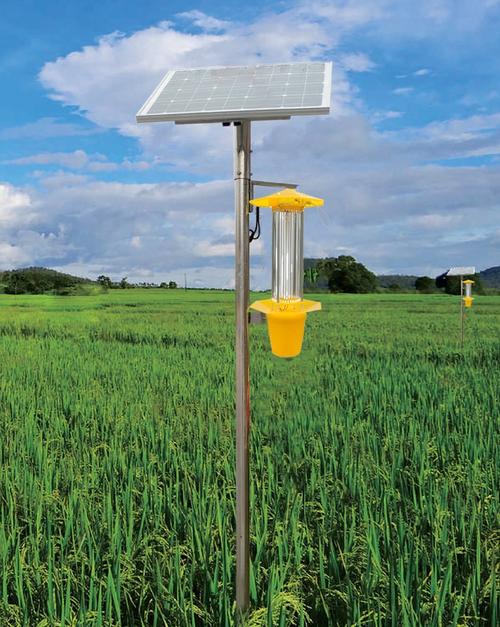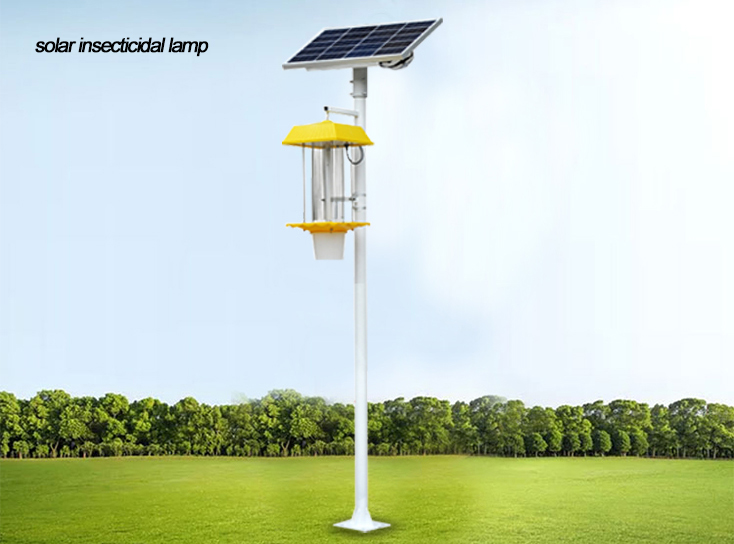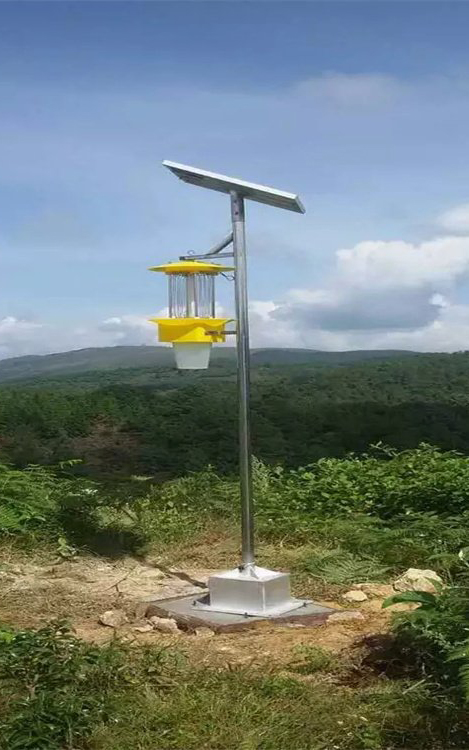

— Blogs —
—Products—
 Consumer hotline +8618073152920
Consumer hotline +8618073152920 WhatsApp:+8615367865107
Address:Room 102, District D, Houhu Industrial Park, Yuelu District, Changsha City, Hunan Province, China
Product knowledge
Time:2025-10-08 16:35:08 Popularity:424
At NiuBoL, we believe in transparent deployment. While a solar-powered insect light trap is an indispensable tool in modern IPM, understanding its limitations is crucial to avoiding poor deployment and disappointment. Here are the core disadvantages of solar insect trap technology and how they can be overcome.

The Risk: Solar charging is drastically reduced on cloudy, rainy, or heavily overcast days. If the battery capacity is too small, the trap may cease operation after 1–2 dark nights, leaving your crops unprotected.
Mitigation Strategy: Choose commercial-grade models with larger solar panels and high-capacity Li-ion batteries (as reflected in the higher solar insect trap price). For areas with prolonged cloud cover, consider hybrid (solar + AC) designs or those explicitly guaranteed to run for 3+ nights without recharge.
The Risk: Light traps primarily attract nocturnal, phototactic (light-attracted) adult insects. They are generally ineffective against non-light-attracted pests like mites, certain aphids, or soil-dwelling larvae. This limits the full range of solar insect trap uses.
Mitigation Strategy: Do not rely on light traps alone. Utilize a multi-method IPM approach. Pair solar insect trap for agriculture systems with pheromone traps (for specific species) or yellow/blue sticky traps (for non-phototactic flying pests).

The Risk: If the light wavelength is too broad or the trap is improperly placed, beneficial insects (especially nocturnal predators) and pollinators can be inadvertently caught.
Mitigation Strategy: We ensure correct wavelength selection (e.g., specific UV bands) that minimizes attraction to non-target species. Crucially, deployment planning must include placement away from flowering zones and natural insect corridors.
The Risk: The trapping mechanisms (glue boards, suction systems, or electric grids) can become clogged by high catch volumes, dust, or moisture. Neglect severely reduces trap performance and compromises your monitoring data.
Mitigation Strategy: Factor in a clear maintenance plan. Glue boards may need weekly replacement; suction/grid systems require bi-weekly or monthly cleaning during peak season. IoT-enabled traps can flag performance issues, turning the maintenance need into a scheduled task.
The Risk: The upfront solar insect trap price (especially for rugged, smart, IoT models) is higher than simple non-powered traps. Additionally, the industrial batteries will need replacement every 3–5 years, raising the Total Cost of Ownership (TCO).
Mitigation Strategy: Focus on the ROI. Long-term savings from reduced pesticide usage, less labor, and higher crop yields consistently offset the initial cost and battery lifecycle disadvantage. Ask for a TCO analysis to prove the long-term cost-effectiveness.
Disadvantage 6: Light Pollution & Regulatory Concerns
The Risk: Deployment near residential areas can lead to complaints about night light pollution, potentially leading to regulatory restrictions.
Mitigation Strategy: Use timing controls to operate the trap only during peak target hours (e.g., midnight to dawn). Utilize light shields and strategic aiming to direct light away from sensitive zones.
While the advantages often outweigh the disadvantages of solar insect trap systems, there are scenarios where they should not be the sole control method:
Non-Phototactic Pests: When the dominant pest is known not to be attracted to light (e.g., spider mites, leaf miners).
Extreme Cloud Cover: In regions like tropical rainforests with prolonged lack of sun, unless a hybrid power source is guaranteed.
Lack of Manpower: If there is no capacity or plan for the required weekly/bi-weekly trap maintenance and data collection.
We build our solar insect trap for agriculture solutions to address these disadvantages upfront:
Hybrid Monitoring: We always recommend pairing light traps with pheromone and sticky traps for comprehensive, non-selective monitoring.
IoT Intelligence: Our systems use IoT telemetry to flag low-charge conditions, identify potential blockages, and ensure continuous operation.
Training & Consulting: We provide deployment consultation and staff training for regular upkeep, turning the maintenance "disadvantage" into a scheduled operational step.

Scenario: A trial deployment of a solar insect trap for agriculture inside a high-value flower greenhouse initially failed.
The Failure: Traps were positioned inside flowering benches, resulting in the unavoidable capture of beneficial pollinators (a classic non-target catch disadvantage), leading to the customer halting use.
The Fix: Traps were relocated to non-flowering zones and the light wavelength was adjusted. The trapping mechanism then successfully targeted the nocturnal pest moths without harming the pollinators working during the day.
Q: Can the disadvantages of solar insect trap technology outweigh the benefits?
A: Rarely—and only if you plan poorly. With correct model selection (adequate battery/panel size) and a strict maintenance plan, the labor, chemical, and yield advantages overwhelmingly dominate the disadvantages.
NiuBoL offers rugged, high-autonomy models and provides the necessary deployment consultation to address these disadvantages of solar insect trap systems proactively.
Ready for a reliable IPM solution? Ask for a technical risk assessment tailored to your farm environment: sales@niubol.com
Related recommendations
Sensors & Weather Stations Catalog
Agriculture Sensors and Weather Stations Catalog-NiuBoL.pdf
Weather Stations Catalog-NiuBoL.pdf
Related products
 Combined air temperature and relative humidity sensor
Combined air temperature and relative humidity sensor Soil Moisture Temperature sensor for irrigation
Soil Moisture Temperature sensor for irrigation Soil pH sensor RS485 soil Testing instrument soil ph meter for agriculture
Soil pH sensor RS485 soil Testing instrument soil ph meter for agriculture Wind Speed sensor Output Modbus/RS485/Analog/0-5V/4-20mA
Wind Speed sensor Output Modbus/RS485/Analog/0-5V/4-20mA Tipping bucket rain gauge for weather monitoring auto rainfall sensor RS485/Outdoor/stainless steel
Tipping bucket rain gauge for weather monitoring auto rainfall sensor RS485/Outdoor/stainless steel Pyranometer Solar Radiation Sensor 4-20mA/RS485
Pyranometer Solar Radiation Sensor 4-20mA/RS485
Screenshot, WhatsApp to identify the QR code
WhatsApp number:+8615367865107
(Click on WhatsApp to copy and add friends)
